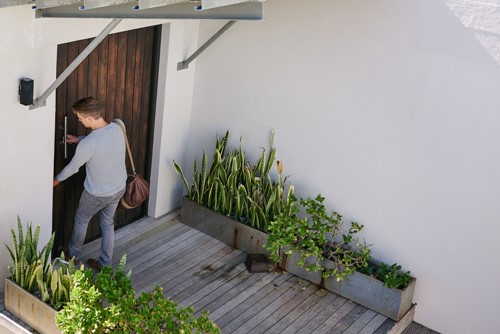
Photo by NakoPhotography via Shutterstock
Whether to protect your belongings when you’re not home or to protect your loved ones when they are, you might consider a security system. Burglars are getting smarter, and your home should follow suit. One way to improve your home’s security is by installing a smart lock.
In general, there are two categories of smart locks: (1) those that replace your traditional bolt lock entirely, and (2) those that install over the top of your existing door lock system. When you replace your current lock with a completely new locking mechanism, the device changes the appearance of your door handle on both front and back. When you use a retrofitting lock, it typically keeps the appearance of your traditional door handle. This distinction is crucial if you have a specific aesthetic you need to follow.
The idea of electronic, wireless entry with remote identification is excellent. However, technological advancement does have its issues. For example, if your Bluetooth or wireless connection is blocked, your lock could end up keeping both you and intruders out of your home. Insist on a system that offers an alternative to wireless entry such as a key fob, keypad, fingerprint reader or self-powered touchscreen.
Here is an abbreviated list of other features to look for in a smart lock system for your home:
If you’ve retrofitted your home’s lock, let your agent know to promote your home’s smart features when you sell it.

Hi, I'm Lisa DiSario and I'd love to assist you. Whether you're in the research phase at the beginning of your real estate search or you know exactly what you're looking for, you'll benefit from having a real estate professional by your side. I'd be honored to put my real estate experience to work for you.